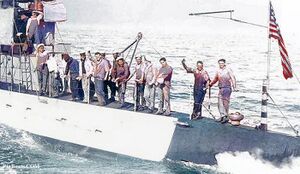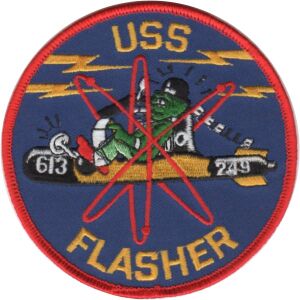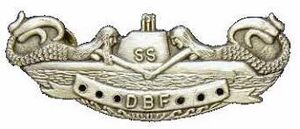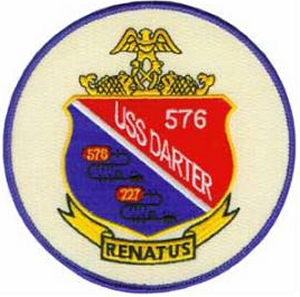Main Page: Difference between revisions
No edit summary |
No edit summary |
||
| Line 44: | Line 44: | ||
[[File:Red bar sub new 2.jpg]] | [[File:Red bar sub new 2.jpg]] | ||
===<span style="color:#000000"><big>What is a Pigboat?</big></span>=== | <!--===<span style="color:#000000"><big>What is a Pigboat?</big></span>=== | ||
<div style="text-align: justify;"><span style="color:#00008B">I am sure that this term probably has many people wondering with a bemused air why we are discussing floating swine. In reality, Pigboats is a term, both complimentary and derogatory, that describes a group of warships from the first decades of the 20th century that were the genesis of the awesomely powerful and sophisticated nuclear submarines of today’s United States Navy. | <div style="text-align: justify;"><span style="color:#00008B">I am sure that this term probably has many people wondering with a bemused air why we are discussing floating swine. In reality, Pigboats is a term, both complimentary and derogatory, that describes a group of warships from the first decades of the 20th century that were the genesis of the awesomely powerful and sophisticated nuclear submarines of today’s United States Navy. | ||
| Line 63: | Line 63: | ||
It took a while, but eventually the surface sailors began to see submariners differently. Amongst themselves, they may have looked down their noses at their smelly and socially obnoxious brethren, but deep inside they respected their technical know-how and their fearlessness in the face of danger. When they said, “Look, here comes a Pigboat!” their voices dripped disdain, but if you listened close enough you would pick up the hidden admiration... and the respect. | It took a while, but eventually the surface sailors began to see submariners differently. Amongst themselves, they may have looked down their noses at their smelly and socially obnoxious brethren, but deep inside they respected their technical know-how and their fearlessness in the face of danger. When they said, “Look, here comes a Pigboat!” their voices dripped disdain, but if you listened close enough you would pick up the hidden admiration... and the respect. | ||
[[File:Red bar sub new 2.jpg]] | [[File:Red bar sub new 2.jpg]]--> | ||
===<span style="color:#000000"><big>The Submarine Tradition</big></span>=== | ===<span style="color:#000000"><big>The Submarine Tradition</big></span>=== | ||
Revision as of 18:46, 4 June 2023

Latest Update June 1, 2023
-
03-May-2023
O-Boats
USS O-3 & O-2 Groton Ct. c1921 -
03-May-2023
B-Class
B-1 before launch Cavite PI 1915 -
USS O-3 & O-2 Groton Ct. c1921
-
B-1 before launch Cavite PI 1915
-
A Good and Favorable Wind A Book by PigBoats.COM
An important note about submarine names
About PigBoats.COM

I was struck by this statement pulled from another submarine related page called Sweet Bird Of Youth.
These sailors were the boys down the street, around the corner, out on the farms, the high school football heroes and, yes, even the geeks of their time, but they became one of the elite, one of that 1% that made the cut and became "Qualified in Submarines". They were, and still are, the best of the best of the United States Navy.
It is important to remember that the submarines were just steel and machinery. It was the men who brought them to life and made them live. It is the men that gave them the romance, the mystery and the mystique.
I have included a number of first person accounts on a some of the pages of what life was like aboard an "S" or "R" or even a "K" boat. There is also an account of what it was like being bombed on Sealion at Cavite Harbor in December, 1941. All this is most valuable since the men who sailed these boats are rapidly making their own "eternal patrols". Preservation of these verbal images is important.
Sailors, rest your oar! You stand relieved, we have the watch. ...and thank you!The Submarine Tradition
Acknowledgements
Special thanks go out to Mr Roland Goodbody, Manuscripts Curator, Milne Special Collections & Archives at the University of New Hampshire Library and his staff and the University of New Hampshire for all their cooperation and kindness in helping me in this endeavor.
All photos that are from the Milne Special Collections, University of New Hampshire Library, Durham, N.H. are their property and may not be reproduced without their permission.
I would also like to thank Wendy Gulley, Curator of The US Navy Submarine Force Museum Library in Groton, Ct. for her kind indulgences in letting me use their archive.
Photos credited to the people who submitted them are their property, and may not be copied or reproduced without their permission unless the original photo came from the public domain such as The National Archives or the United States Navy.
Your PigBoats.COM Staff
Webmaster TN(SS) Richard C. "Ric" Hedman, USN, a native of Washington state, joined the Navy in 1964. He put into commission the nuclear submarine USS Flasher (SSN-613) and took her to sea on her initial sea trials in the Atlantic and subsequent patrols in the Pacific. In 1968 he transferred to the Naval Reserve and in 1969 was sent to the diesel submarine USS Cusk (SS-348) as part of his annual Reserve training. He mustered out of the Navy in 1970 to pursue a civilian career. He is Qualified in Submarines. Ric has been the webmaster of PigBoats.COM since 1999.
Webmaster DCC(SS/SW) David L. "Dave" Johnston, USN (Ret.) is a native of Michigan and first joined the Navy in 1983. He joined the crew of the USS Darter (SS-576), forward deployed to Sasebo, Japan and patrolled the western Pacific for three years. After a break of nearly 15 years, he rejoined the Navy in 2001 and finished out a 21 year career, retiring in 2019. Dave has also served on minesweepers and destroyers in addition to active duty service to the Navy Reserve. He is Qualified in Submarines and Surface Warfare. Dave has been associated with PigBoats.COM since 2001.
Page created by:
Ric Hedman & David Johnston
1999 - 2023 - PigBoats.COM©
Mountlake Terrace, WA, Norfolk, VA
webmaster at pigboats dot com






